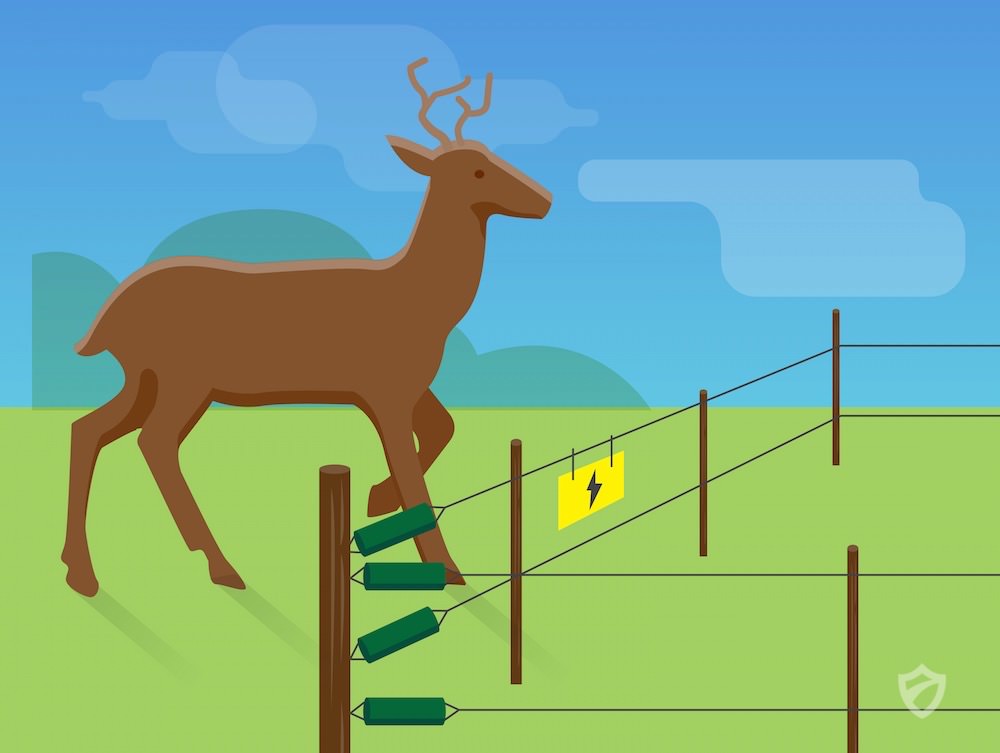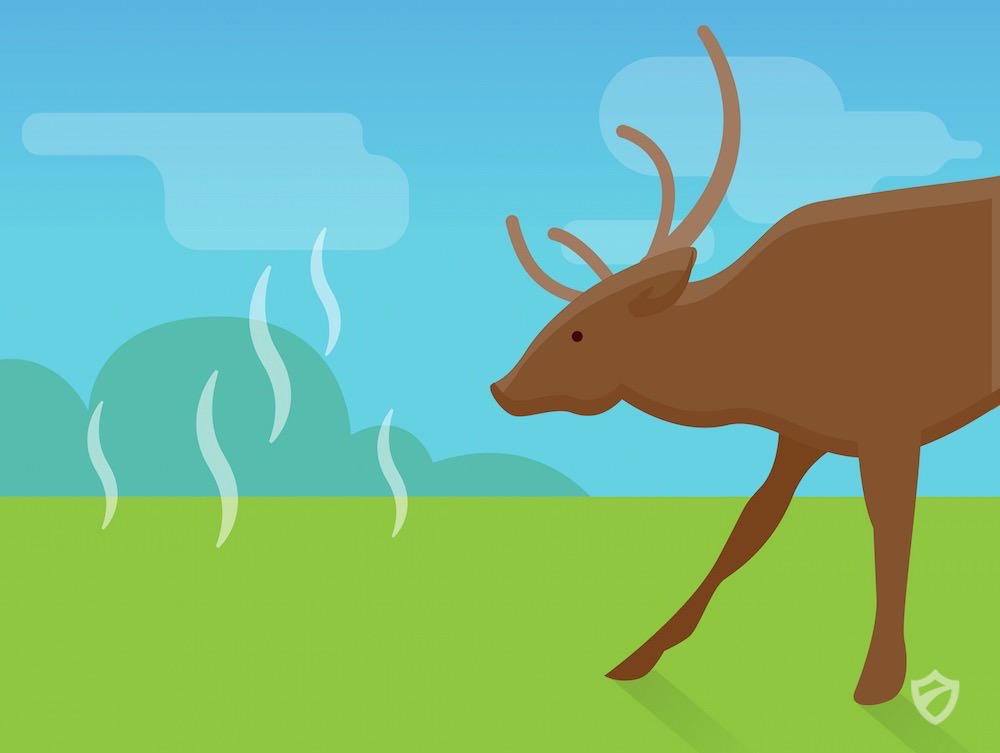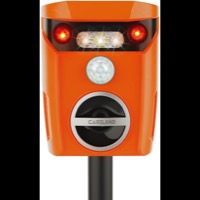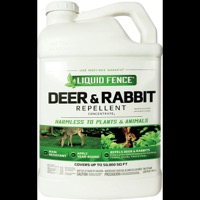Keeping Deer Out of Your Garden or Yard

By Simon Lockwood, Expert Reviewer for Repellent Guide
published: Aug 01, 2017 | updated: Aug 01, 2017
Various species of deer can be found throughout the world, and in North America, the white-tailed deer and blacktail (mule) deer are extremely prevalent. In many places, deer represent a significant economic value, providing revenue in terms of hunting equipment and licensing fees; To the hunters, they represent a source of food and recreation. Some people find enjoyment in the presence of deer for other reasons. Many will observe them grazing peacefully in state parks, a simple pleasure for those who appreciate the docile grace of the animal.
That being said, not everyone is fond of having deer around when it comes to their own property. Some folks spend a good amount of money on expensive landscaping and ornamental plants, and for them, the thought of having them chewed to bits by the wandering wildlife doesn't sit well. In cases such as these, the question of how to keep the deer away becomes a top priority.
Why Are Deer in My Yard?
The first question that may come to mind is why the deer are intruding on your property in the first place. This is usually a matter of location, as animal intrusion often occurs in areas called ecotones, or the area of transition between two biomes. When a natural forest turns sharply into a batch of residential yards, you've got an ecotone that's prime for animal incursion. When you add in factors like increased construction in the area, restricting the animals' habitats even further, a few wandering deer are almost inevitable.
Are the Deer Really a Problem?
The answer really depends on the person whose yard they're in! Some people are happy to share their yard with deer. (Some will even feed them.) Other folks, like the aforementioned homeowners who treasure their landscaping, aren't quite so welcoming.
The good news is that there are a variety of ways that homeowners can keep deer out of their yards.
Four Main Methods for Handling a Deer Problem
In a moment, we will discuss a number of deer control options in detail. For now, let's break down the available options into their main categories:
Exclusion
Exclusion involves placing a barrier around the property to physically prevent the deer from gaining access. In most cases, that means some manner of fence.

Intimidation
This method involves a device or devices that are designed to scare the deer away. Most of these devices rely on loud noises to frighten the animals, which may make them impractical in many cases.

Repellents
You can find a variety of commercially-available deer repellents in stores or online. There are also a number of “home remedies” that have been proven to work in some situations. We will explore these at length.

Hunting
This option, when pursued legally and safely, involves obtaining the proper licensing to hunt the deer from your property. Since most residential areas have restrictions about using firearms or bows, this isn't an option for the vast majority of homeowners.
Exploring Your Options in Detail
Exclusion
There are a number of fence options that are helpful in preventing deer incursion and depredation. The optimal choice will depend on the size of the property, the number of deer in the area, and the value of the yard/plants being protected. (Expensive fencing makes financial sense when defending many acres of valuable crops, but it's less practical when you're just trying to defend your shrubs.)
Electric fences are the most common used in keeping deer out of large areas, either in temporary or high-tensile form. Temporary electric fences are easy to set up and are very effective, but they require weekly maintenance and inspection. High-tensile fencing is permanent, but very costly and must be built to specific guidelines.
A commonly-used trick with any electric fence involves smearing peanut butter on the wires. When the deer touch their nose to the source of the enticing smell, they get a sharp jolt that they won't easily forget. This quickly trains them to avoid the fencing altogether.
For yards and residential areas, standard wood or vinyl privacy-type fencing is preferred. While effective, fencing even a small yard can be too expensive of an option for the typical homeowner. It may also be counterproductive for those who wish to keep deer out without blocking their own view of the surrounding area.
If you're truly desperate and willing to deal with adding an unsightly element to your yard, you can try using snow fencing to deter the deer. While they can easily jump over a short barrier such as this, they may simple avoid doing so in favor of easier grazing elsewhere.
Intimidation
Farmers with huge tracts of land have access to plenty of options in this department, most of which are not advisable in residential neighborhoods. Their solutions range from fireworks to motion-activated gas explosion devices, neither of which will make your neighbors happy.
What you can get away with is something like the ScareCrow motion-activated sprinkler. This gizmo will sit quietly in your yard until something (hopefully not your neighbor) triggers it, at which point they'll be blasted with cold water.
You can also purchase ultrasonic sound emitters, such as the Yard Sentinel. These emitters provide a safe, simple, and humane solution by broadcasting a high pressure ultrasonic sound wave that deer (and most other animals) will find maddening. These are available in convenient motion-activated versions as well.
It should be noted that motion-activated lights don't really work against deer. They're fairly smart animals, and it doesn't take them long to recognize patterns. Most of the time, they will learn that the light is harmless and simply begin ignoring it.
Repellents
Commercial deer repellents come in whole variety of different brands and main ingredients. Most of these will one of the following three types:
Egg-based – Putrefied egg smells like a rotting corpse to a deer. And to a deer, that means there's probably a predator nearby. Predator Urine – Oftentimes, wolf urine is used to make this spray deterrent. Where a predator is peeing, it's also hunting (or so the deer will believe.) Blood-based – Usually made by combining pigs' blood with a vegetable oil base, this also makes the deer think of predators in the area. The oil suspension is also more resistant to rain.
If you're not ready to invest in a commercial solution, there are a number of home remedies that you can try, as well. Here are some of the top suggestions:
Rotten eggs can provide a home-brew version of the egg-based repellents. Mix 4 - 5 raw eggs with a gallon of water and apply with a sprayer. You can keep deer off of specific plants by using a hot pepper mixture. Boil dried hot pepper, strain out the solids, and then put the spicy liquid in a spray bottle. Apply directly to plants (and hope that your local deer don't like Thai food.) Soap flakes have been proven to repel deer. Sprinkle them liberally around a garden or plant bed for best results. This isn't the most efficient method for larger areas, as you'll need to reapply the flakes often.
A time-tested remedy involves placing human hair in a stocking and hanging it in your yard. The smell of human is supposed to be enough to keep the animals away, but many argue that the method no longer works. They say that deer have become so accustomed to being around humans that the smell doesn't frighten them.
Hunting
This method is only an option for a select few homeowners. The ability to hunt deer on your property will depend on state and municipal laws. It will almost invariably require a license, and you will not be able to legally kill deer in any but the sparsest of residential areas. Unless you live on a farm that's adjacent to a tract of undeveloped land, this is not a likely solution.
General Tips for Keeping Deer Out
Speed is important! Regardless of which method you choose, success will be far more likely if you take action before the deer establish a routine of grazing in your yard. The sooner they learn to stay off your property, the better. No repellent (other than a fence) will offer 100% protection. You may want to combine several of the above methods to achieve the best results. Repellents must be applied regularly. Studies show that the more often you use them, the better they will work. You should always apply more repellent product after it rains.
Even if you find a method that works, you should rotate through the other methods from time to time. Since deer are so quick to develop habits and push boundaries, any one remedy may only work for a short while.
A Note on Deer-Repellents for Vehicles
There are a number of products out there for drivers who are worried about crashing into deer while on the road. Most of them, such as the Save-a-Deer Whistle, are simple devices that attach to the vehicle and produce a sound when in motion.
Although there isn't much evidence to prove that these devices prevent accidents, there have been studies showing that the ultrasonic frequency sound emitted by them can be heard by deer. Combine this information with scores of positive reviews on Amazon, and you might conclude that they're a very worthwhile safety measure.
-
Ultrasonic
-
Concentrate



